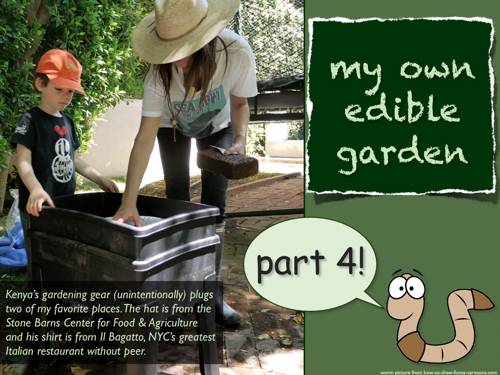
It?s amazing. We started planting our garden not even two months ago and we?re already eating out of it regularly. Greens like lettuce, chard and kale and herbs such as cilantro, basil, thyme and more grow like weeds in our backyard. Watching other fruits and veggies like beans, eggplant, strawberries and tomatoes just start to flower and be but tiny shadows of what they will become is one of the most exciting parts for the kids. But by far, starting our worm farm has been the experience they just can?t get enough of. Since we don?t have any pets, Kenya and Chloe have adopted the worms as their own and are empowered taking such good care of our new friends.
Lauri, my friend and garden guru from Edible Gardens LA says having worms in your garden is essential ?for so many reasons, but mainly it?s about the worm ?poop? (or castings). Worm poop is a great organic fertilizer and you can make some at home with your own worm farm. The worm farm collects the poop in the lower container, which you then drain out, dilute with water and then water your garden with it. This helps your garden thrive.?
Here?s how to start your own worm farm:
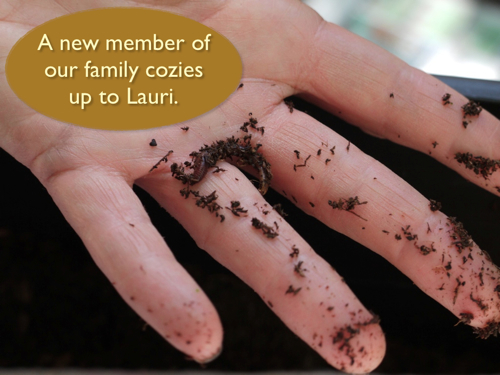
Use red worms or tiger worms only (available at nurseries and online) because common garden worms are not suitable.
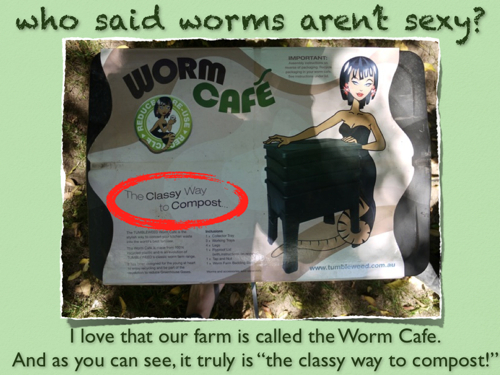
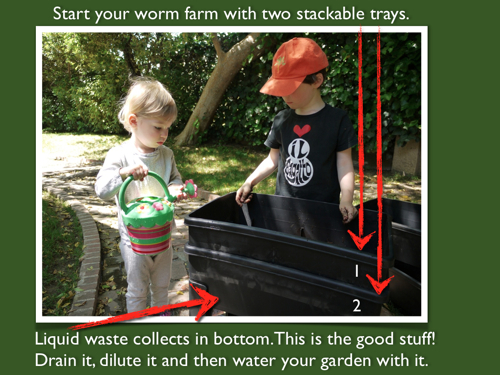
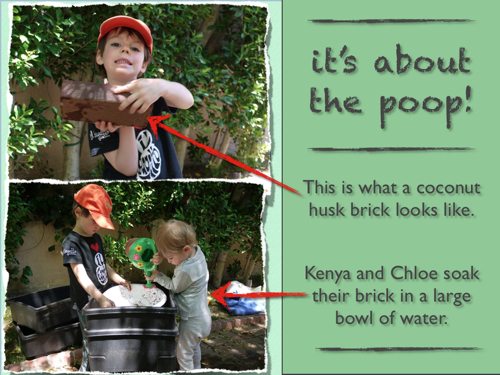
Start your worm farm with two stackable trays (you can choose from many different brands of worm farms sold online). The bottom tray collects liquid waste that drains down from the upper bin(s). This is the good stuff! Just above the bottom collection tray, place the tray with the drainage holes. Then, put a layer of coconut husk that has been soaked in water. Coconut husk bricks are sold online or in nurseries. Soak one in a large container of water until it becomes soft and wet. You will be shocked at how large it expands.
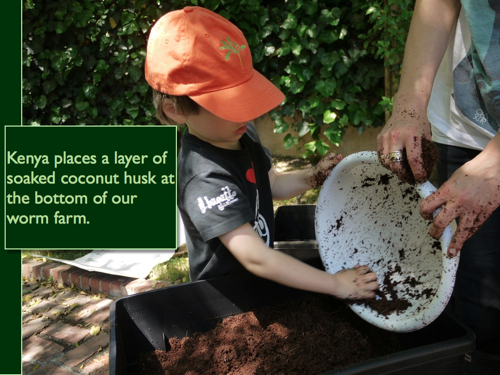
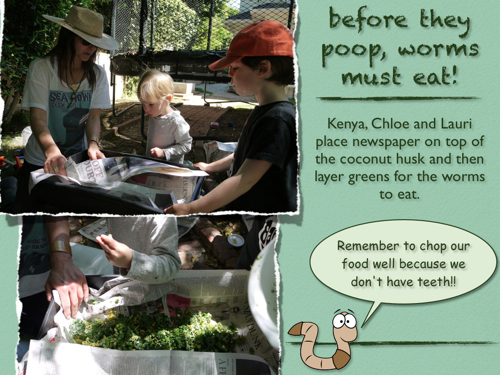
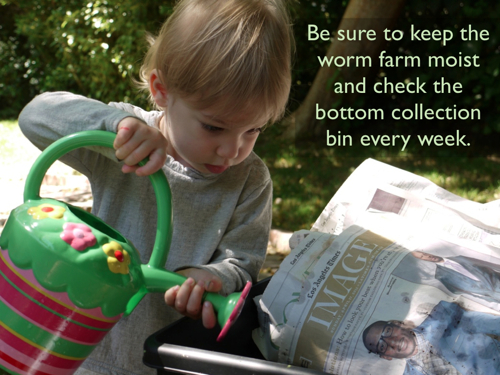
Next, put down two sheets of newspaper and on top of that a nice amount of chopped vegetables and fruit (not a huge amount as you do not want it to get hot and harm the worms). This is a great way not to waste any overly ripe fruits and veggies in your kitchen that are about to go bad ? feed them to your worms! Remember to chop vegetables and fruit well as worms don?t have teeth! And no citrus, garlic or onions. Next, put several more sheets of newspaper (worms like it dark) on top of the food and finally attach the worm farm cover. You can add additional trays as your worm farm matures.
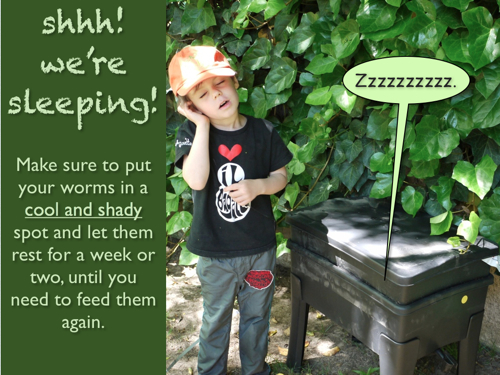
Make sure to keep the worm farm in an outdoor shaded area. Plan on feeding your worms every two weeks but, make sure to check that they do not need more food sooner. Be sure to keep the worm farm moist and check the bottom collection bin every week.
If you want to read even more, check out the book ?Worms Eat my Garbage!?
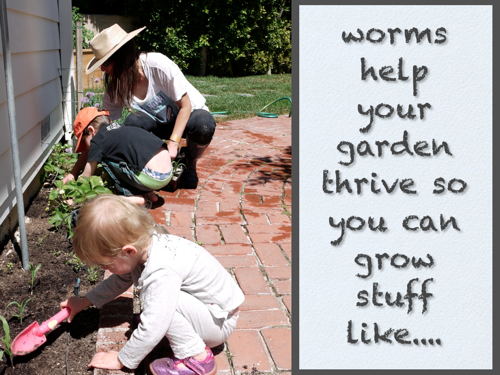
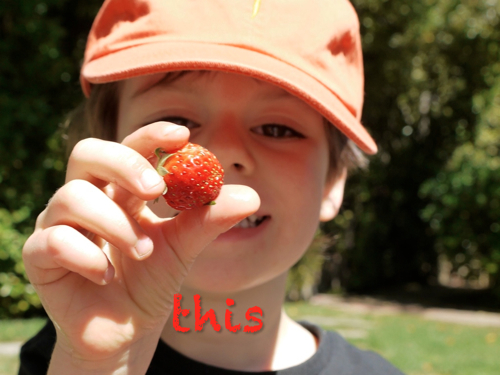
 ?Print This Recipe ??
?Print This Recipe ??  ?Email This Recipe
?Email This Recipe

Tags: Beans, best baby food recipes, best compost, best gardening tips, best gardens, best recipes, best recipes for kids, catherine mccord, Cilantro, coconut husk, compost, cooking for kids, cooking from the garden, cooking with kids, easy recipes, edible garden, edible gardening, edible la, family recipes, fast recipes, gardening, gardening with kids, green thumbs, healthy recipes, homemade baby food, how to build a worm farm, how to build an edible garden, how to compost, how to garden, kids in the garden, lady bugs, mint, my own edible garden, organic recipes, palnting, planting seeds, recipes for kids, recipes for moms, recipes from the garden, seed, seeds, squash, summer squash, toddler recipes, tomatoes, what is an edible garden, what to plant, worm farms, worms
ben bernanke obama releases birth certificate peyton hillis harry potter and the deathly hallows part 2 trailer tornado watch
No comments:
Post a Comment
Note: Only a member of this blog may post a comment.